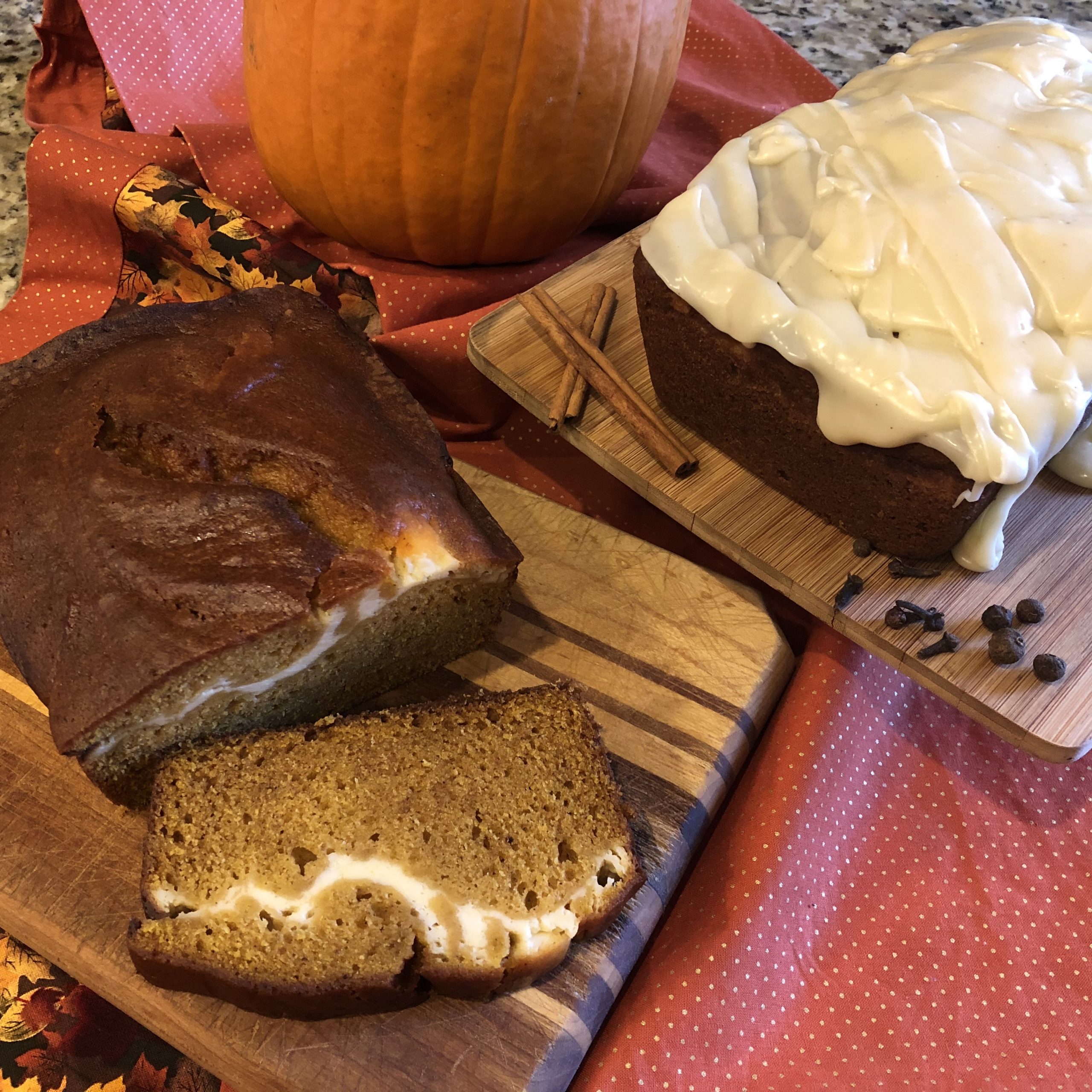Pumpkin Cream Cheese Bread w/ Brown Butter Icing & Heart Mountain’s WWII Root Cellars

The history of Japanese Americans in the United States and the events leading into and beyond their incarceration during World War II is tedious and reprehensible. A true tale of American ingenuity overcoming insurmountable adversity. One physical reminder of this was the construction of the root cellars at Heart Mountain Confinement Site.
Starting in January 1943, meat, sugar and coffee rationing went into effect for internees. Resources were limited due to the war-time shortages and subsequent rationing. The camp administration and internees knew self-sustenance was necessary for the incarcerees to survive. The camp’s food quality and quantity was already questionable and its further decline wasn’t an option. The camp’s agriculture program, in 1943, was expected to grow and use 4,932,000 pounds of produce. In turn, it would ship out 650,000 pounds to the other WRA centers. This large volume of crops required vast amounts of farm land to grow in. By the beginning of March 1943, two-thousand acres of farming area on the camp grounds were cleared of sage brush.

Cleared and Uncleared Land 
Children Near Irrigation Canal (1943) 
Planting a Garden
After the completion of the Highline Ditch irrigation canal in June 1943, planting went into full swing. During the week of September 26, 1943 alone, the agriculture program produced:
With enormous amounts of crops being harvested from once barren land in less than a year’s time, storage from “Heart Mountain Miracle” was necessary. Beginning in the summer of 1943, two root cellars, approximately 300 feet long and 40 feet wide, were dug out and reinforced with timber and lumber from the camp sawmill. The design intentionally allowed trucks to enter in one side of the root cellar and exit through an opposite door. The cellars were ready for use in September 1943.



Heart Mountain Sentinel (September 4, 1943)
Research Library
In June 2016, the Heart Mountain Wyoming Foundation and Heart Mountain Interpretive Center staff began the tedious process of preserving and restoring the site’s only existing root cellar. This functional relic is historically significant, as it’s the only remaining structure built entirely by Japanese Americans in internment camps. Volunteers were asked to donate any time they could over a two-day window. Helping Interpretive Center staff and Northwest College professors, a team of volunteers including Son A, B and I helped survey the root cellars’ exact underground locations and meticulously dig for hidden artifacts.

Surveying the Root Cellar’s Location 
Excavating the Collapsed Second Root Cellar 
Sifting the Dig Material
We were also fortunate to go down into this now 77 year old structure. The Jolovich family acquired the property in 1945 after the camp closed. It was donated to the Heart Mountain Foundation in 2015. Items like used oil cans, barbed wire, and an abandoned car are seen inside the cellar.
In between digging and surveying, we ate a bagged lunch inside the existing Heart Mountain barrack on the historic site. Sold by the government for $1 in 1945, this barrack moved from Heart Mountain to Greybull, Wyoming where it served as veteran’s housing. It was later moved to nearby Shell, Wyoming to act as housing for Iowa State University’s geology field studies station. Instead of demolishing it, Iowa State University donated the building to the Heart Mountain Foundation in 2015. The barrack now sits on the original location of a military police barrack. More information about the barrack’s journey can be read here.

Interior Door into Cellar 
Inside Root Cellar 
Oil Can 
Birds Nest 
Open Ceiling 
Electrical Outlet 
Lunch Inside an Original Heart Mountain Barrack
It’s hard to image what the root cellar looked like after it’s completion. Fortunately, the National Archives has images of the existing root cellar to compare its 1943 appearance to its current condition.

Roof Vents
(November 23, 1943)
Truck Driving Through Root Cellar
(Nov. 23, 1943)
Roof Vent (June 21, 2016) 
Door Overgrown with Sage Brush
(June 21, 2016)
The Heart Mountain Interpretive Center is an excellent place to learn about this unfortunate chapter in American history. Through interactive exhibits and extensive artifacts, visitors learn about the hardships Japanese Americans faced, and their overwhelming desire to thrive despite deplorable and unjust circumstances.
On the camp grounds, visitors can walk along the paved Setsuko Saito Higuchi Interpretive Trail and see features remaining from the camp, such as the swimming pool hole. In the Memorial Park, guest can pay tribute to the over 900 service members listed on the replicated camp Honor Roll. In addition to the Barrack, a replica guard tower gives guests a sense of how military police watched over the camp in eight total towers. A requirement for this visitor is always walking to the three remaining hospital buildings and staring up at the 150-foot tall red-brick chimney. It always seems so small from a distance.

Setsuko Saito Higuchi Interpretive Trail 
Backside of the Honor Roll 
Guard Tower 
Hospital Building with 150-foot Chimney


































